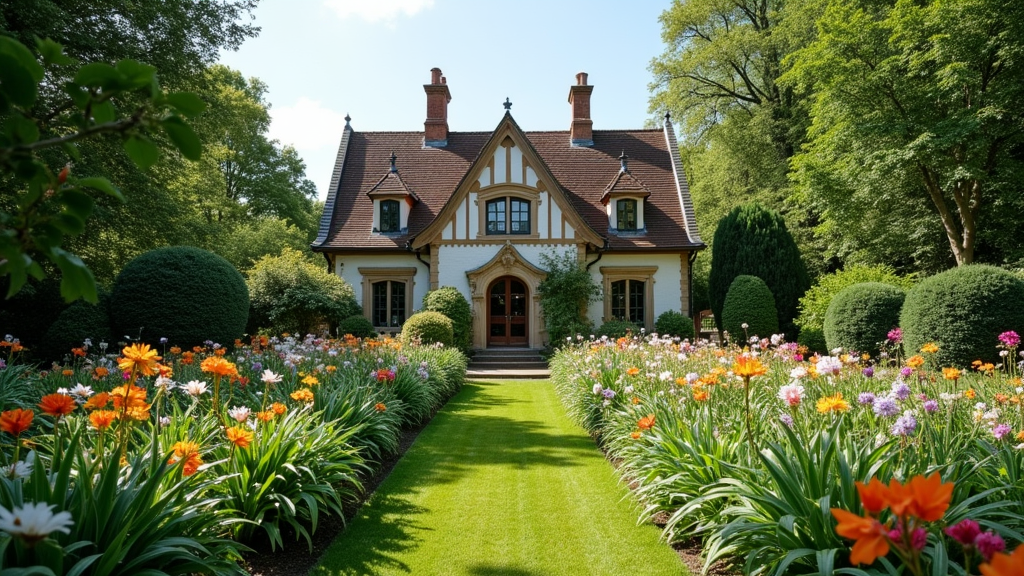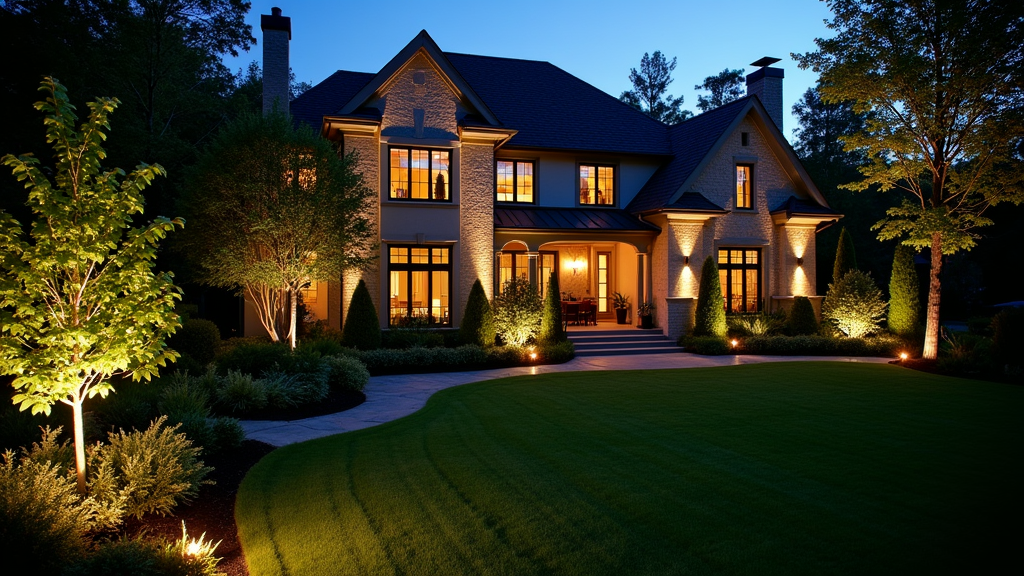Introduction
In today’s fast-paced world, the need for sustainable living has never been more pressing. With climate change and urbanization challenging traditional food systems, many are turning to innovative solutions that allow us to reconnect with nature while providing for our dietary needs. One such solution lies in the concept of an edible forest garden. This article delves into Creating a Sustainable Edible Forest Garden through Smart Design Choices and explores how smart landscape design can lead to a fruitful and sustainable gardening experience.
What is an Edible Forest Garden?
An edible forest garden is essentially a diverse ecosystem designed to mimic the natural forest structure, yet it focuses on producing food. It combines trees, shrubs, herbs, and vegetables in a way that maximizes space and resources while minimizing waste.
The Principles of Edible Forest Gardening
- Diversity: Just like a natural forest, diversity in plant species promotes resilience against pests and diseases. Layering: Utilizing vertical space by planting at different heights allows for efficient use of sunlight. Soil Health: Healthy soil is the foundation of any productive garden; integrating composting and mulching can significantly enhance soil fertility.
Benefits of Creating an Edible Forest Garden
Biodiversity Promotion- Encourages various plant species that support wildlife.
- Provides fresh fruits, nuts, vegetables, and herbs year-round.
- Lowers dependency on store-bought produce which travels long distances.
- A balanced ecosystem naturally regulates pest populations.
- Spending time in nature has proven benefits for mental well-being.
Designing Landscapes with Nature in Mind
When considering landscape design for your edible forest garden, keeping nature's principles at the forefront is crucial.
Key Elements of Landscape Design
- Microclimates: Understanding sun patterns and wind directions can help place plants where they'll thrive best. Water Management: Incorporating swales or rain gardens can capture runoff water efficiently. Pathways: Create access routes that minimize disturbance to plants while allowing easy navigation throughout the garden.
Creating a Sustainable Edible Forest Garden through Smart Design Choices
To successfully implement an edible forest garden requires thoughtful planning and execution. Here are practical steps to guide you through the process:
Step 1: Assess Your Site
Before you plant anything, assess your site thoroughly:
- Determine soil type (sandy, clayey, loamy). Observe sunlight levels throughout the day. Identify existing flora and fauna.
Step 2: Develop a Design Plan
A well-thought-out plan will save time and resources later on:
- Sketch out zones based on sun exposure and water availability. Choose companion plants that benefit each other when grown together.
Step 3: Choose Your Plants Wisely
Selecting the right plants is pivotal in ensuring your garden flourishes:
- Prioritize native species as they’re better adapted to local conditions. Opt for perennial plants; they require less maintenance over time than annuals.
Step 4: Implement Soil Health Practices
Healthy soil equals healthy plants:
- Regularly add organic matter like compost or mulch to feed your soil. Employ crop rotation strategies to prevent nutrient depletion.
Step 5: Create Functional Pathways
Design paths that facilitate movement without damaging your crops:
- Use permeable materials like gravel or wood chips to allow water infiltration.
Step 6: Incorporate Wildlife Habitats
Encouraging beneficial wildlife can enhance your garden’s biodiversity:
- Plant flowers that attract pollinators—bees love lavender!
Selecting Trees for Your Edible Forest Garden
Trees form the backbone of any edible forest garden. Here's what you need to consider:
Fruit Trees vs Nut Trees
Both types offer unique benefits:
- Fruit trees provide seasonal yields but may require more care. Nut trees take longer to mature but offer high-energy food sources once established.
Top Picks for Fruit Trees:
Apple Pear PlumTop Picks for Nut Trees:
Walnut Chestnut HazelnutShrubs That Thrive in Your Garden
Shrubs can fill gaps between trees while providing additional yield:
Recommended Edible Shrubs
| Shrub Name | Characteristics | |----------------|---------------------------------------| | Blueberry | Rich in antioxidants; requires acidic soil | | Raspberry | Fast-growing; produces fruit quickly | | Elderberry | Attractive flowers; medicinal uses |
Ground Covers That Benefit Your Landscape
https://www.ramirezlandl.com/Ground covers play several roles—they suppress weeds, retain moisture, and improve aesthetics:
Best Ground Cover Plants
Strawberries—delicious fruit while serving as ground cover! Clover—fixes nitrogen back into the soil.Vertical Gardening Techniques
Maximizing space can be achieved through creative vertical gardening methods:
Trellises & Arbors
These structures support climbing plants effectively:
Grapevines Pole beansWall Planters
Using vertical spaces not only looks attractive but also saves room!
Companion Planting Strategies
Certain combinations aid growth by repelling pests or enhancing flavors:
| Plant Pairing | Benefits | |---------------------|-----------------------------------| | Tomatoes & Basil | Enhances taste | | Carrots & Onions | Natural pest deterrent |
Seasonal Maintenance Tips
Keeping your edible forest garden healthy requires seasonal attention:
Spring Tasks
Mulching—helps retain moisture as temperatures rise. Pruning—promotes healthy growth in trees and shrubs.Summer Tasks
Watering regularly during dry spells. Monitoring pests actively before infestations occur.Fall Tasks
Harvesting fruits before frost sets in. Composting fallen leaves for nutrient recycling.Winter Tasks
Planning for spring planting by researching new varieties. Protecting young trees from winter damage using wraps or barriers.Educating Yourself Continually
Creating an edible forest garden is a journey filled with learning opportunities:
- Consider attending local workshops or online courses related to landscape design focused on sustainability.
Community Involvement
Engaging with fellow gardeners fosters knowledge sharing:

FAQs About Creating an Edible Forest Garden
Q1: How much space do I need?
A1: Even small spaces can accommodate an edible forest garden with vertical gardening techniques or container gardening methods!
Q2: What if I live in a colder climate?
A2: Choose cold-hardy varieties of fruit trees and shrubs; research plants suitable for your hardiness zone!
Q3: Can I create an edible garden on my balcony?
A3: Absolutely! Use containers and vertical gardening ideas to maximize limited space effectively!
Q4: How long does it take for my garden to start producing?

Q5: Do I need special tools?
A5: Basic gardening tools will suffice initially—shovels, pruners, watering cans are essential!
Q6: Is this project expensive?
A6: Costs vary widely depending on choices—starting small may ease financial strain while still yielding results!
Conclusion
Creating a sustainable edible forest garden through smart design choices offers not just nourishment but also enriches our lives by reconnecting us with nature's rhythms. By thoughtfully selecting plants, understanding their interactions within ecosystems, practicing good landscape design principles, we cultivate not only food but also awareness about our environment's delicate balance.
Embark on this rewarding journey today—your future self will thank you for every fresh berry picked straight from your backyard!